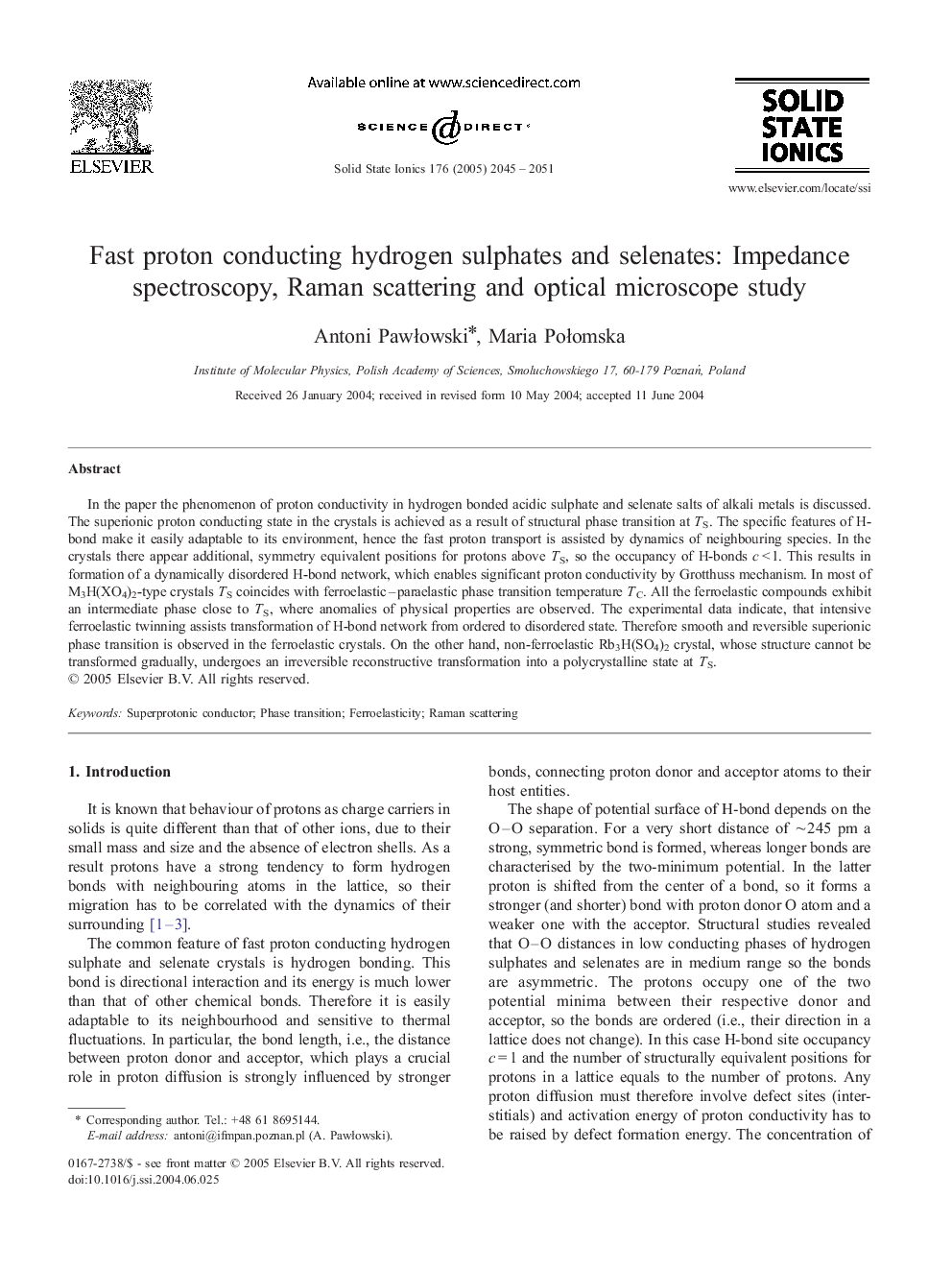| Article ID | Journal | Published Year | Pages | File Type |
|---|---|---|---|---|
| 1298588 | Solid State Ionics | 2005 | 7 Pages |
Abstract
In the paper the phenomenon of proton conductivity in hydrogen bonded acidic sulphate and selenate salts of alkali metals is discussed. The superionic proton conducting state in the crystals is achieved as a result of structural phase transition at TS. The specific features of H-bond make it easily adaptable to its environment, hence the fast proton transport is assisted by dynamics of neighbouring species. In the crystals there appear additional, symmetry equivalent positions for protons above TS, so the occupancy of H-bonds c < 1. This results in formation of a dynamically disordered H-bond network, which enables significant proton conductivity by Grotthuss mechanism. In most of M3H(XO4)2-type crystals TS coincides with ferroelastic-paraelastic phase transition temperature TC. All the ferroelastic compounds exhibit an intermediate phase close to TS, where anomalies of physical properties are observed. The experimental data indicate, that intensive ferroelastic twinning assists transformation of H-bond network from ordered to disordered state. Therefore smooth and reversible superionic phase transition is observed in the ferroelastic crystals. On the other hand, non-ferroelastic Rb3H(SO4)2 crystal, whose structure cannot be transformed gradually, undergoes an irreversible reconstructive transformation into a polycrystalline state at TS.
Related Topics
Physical Sciences and Engineering
Chemistry
Electrochemistry
Authors
Antoni PawÅowski, Maria PoÅomska,
